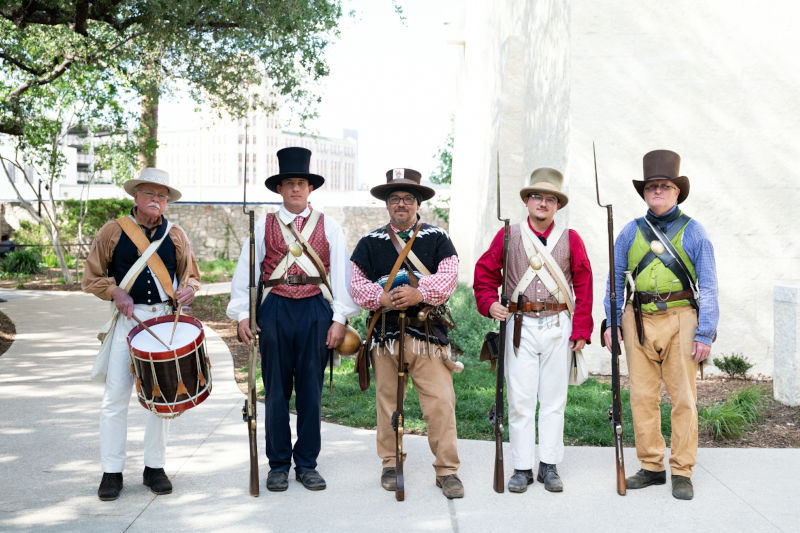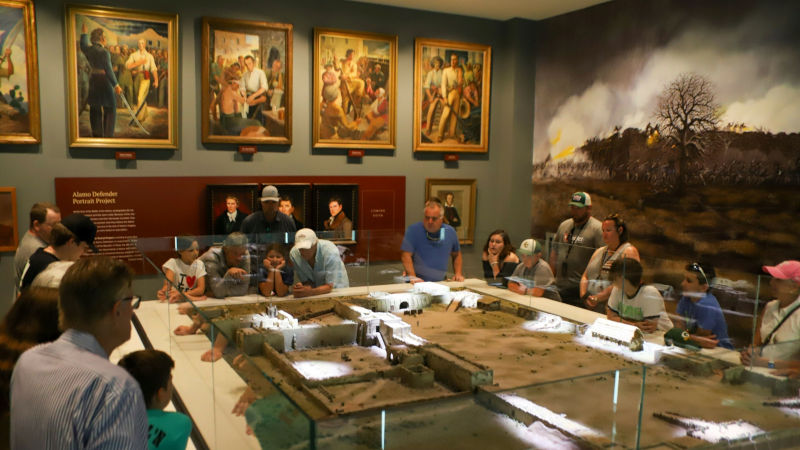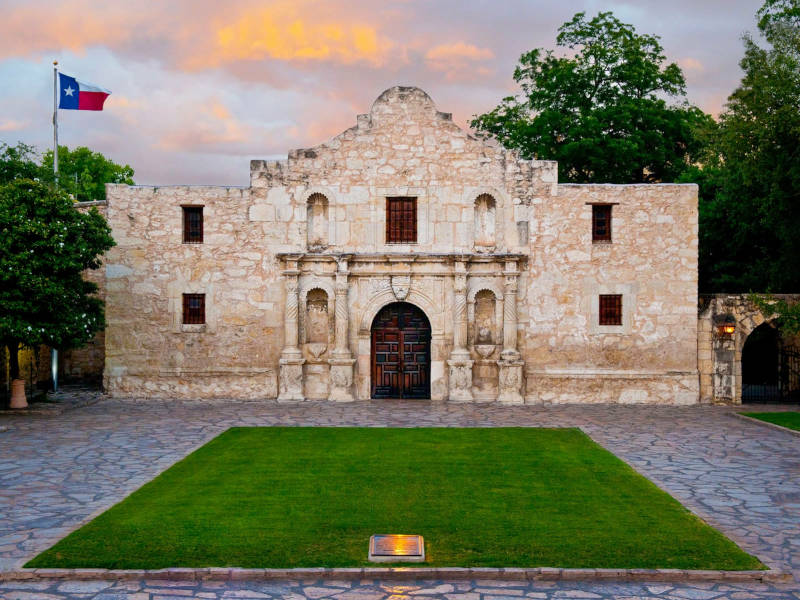The Alamo, an emblem of courage and sacrifice, is a poignant reminder of the tumultuous events that shaped not only Texas but the entire nation. Its walls echo the stories of heroism, resilience, and the unyielding spirit of those who fought within them. As we look at the history of the Alamo, we delve into its origins, the battle that immortalized its name, and the legacy that continues to inspire millions. Join us as we uncover the layers of history that tell the tale of the Alamo, from its humble beginnings to its status as a revered historical site.

Why Are History Enthusiasts Fascinated With the Alamo?
The Alamo's allure for history enthusiasts is as enduring as the structure itself. This fascination stems from a blend of myth, memory, and the monumental impact of the events that transpired within its walls. It's a place where the past feels palpable, inviting visitors to step back in time and walk in the footsteps of the Alamo's defenders.
At the heart of this fascination is the legendary Battle of the Alamo in 1836, a pivotal moment in the Texas Revolution. The story of a small group of defenders facing overwhelming odds yet choosing to stand their ground resonates deeply. It speaks to universal themes of courage, sacrifice, and the quest for independence.
But the history of the Alamo extends far beyond this famous battle. Originally established as a mission in the 18th century, its transition from a place of spiritual guidance to a fortress symbolizes the changing tides of history in the region. This transformation reflects broader themes of colonial expansion, conflict between cultures, and the struggle for control of the North American frontier.
The aftermath of the battle and the way the Alamo has been commemorated and remembered highlight the complexities of historical memory. The site has become a shrine to liberty, a subject of controversy, and a symbol of Texan identity. It raises intriguing questions about how we remember our past, whose stories are told, and how those narratives shape our understanding of history.
Understanding the Alamo: A History Deep-Dive
The story of the Alamo is a tapestry woven from the threads of exploration, mission life, military strategy, and cultural convergence. This deep dive into its history reveals the transformation of a mission into a battleground, shedding light on the layers of history that have cemented its place in the annals of time.
Alonso Álvarez de Pineda's Expedition: Mapping the Coast of Texas
The history of the Alamo begins with the early explorations of the New World. In 1519, Alonso Álvarez de Pineda led a Spanish expedition that mapped the Gulf Coast, marking the first documented European encounter with what is now Texas. Though Pineda never set foot on the site of the future Alamo, his voyage laid the groundwork for subsequent Spanish exploration and colonization efforts in the region. His maps and reports highlighted the strategic and economic potential of the area, setting the stage for future endeavors that would eventually lead to the establishment of missions and military outposts, including the Alamo.
Mission San Antonio de Valero: A Religious Outpost
In the early 18th century, as part of an effort to consolidate its claim to North America and convert indigenous peoples to Christianity, Spain began establishing missions in what is now Texas. Founded in 1718, Mission San Antonio de Valero served as a key religious outpost. Its primary purpose was to introduce the local Native American population into Spanish society, teaching them farming techniques, crafts, and Christianity. Over the years, the mission complex grew to include a church, living quarters, workshops, and fields. However, by the late 18th century, the mission system had begun to decline, and the mission was secularized.

Alamo Company: The Birth of a Military Garrison
Following the secularization of Mission San Antonio de Valero, the complex gradually transitioned into a military garrison. This transformation was partly due to the changing political landscape and the need for a fortified presence in the area. By the early 19th century, the mission, now known more commonly as the Alamo, served as home to Spanish military units, including the Second Flying Company of San Carlos de Parras. These Spanish soldiers, known as the Alamo Company, played a crucial role in the defense and administration of the region, marking the beginning of the Alamo's history as a military site. Their presence underscored the strategic importance of the location and laid the groundwork for its role in the forthcoming battles for Texas' independence.
Spanish Military Occupation: The Naming of the Alamo
The name "Alamo" is a testament to the site's military history. Derived from the Spanish word for cottonwood, "Álamo," the name is believed to have been inspired by the grove of cottonwood trees that surrounded the mission. This name, initially associated with the Alamo Company of soldiers stationed there, became synonymous with the fortress itself. The Spanish military occupation of the site reinforced its strategic significance, serving as a key position in the defense against both internal rebellions and external threats. During this period, the Alamo underwent modifications to strengthen its defenses, preparing it for the role it would famously play in the Texas Revolution.
Mexico's Independence: The Backstory of the Battle
The tale of the Alamo is inseparable from Mexico's journey to independence and the turbulent years that followed, setting the stage for the legendary battle. Mexico's independence from Spain in 1821 was a turning point, reshaping the political landscape of North America and sowing the seeds of conflict in the newly formed nation.
The Battle of Gonzales Explained
The Battle of Gonzales, often heralded as the "Lexington of Texas," marked the beginning of the Texas Revolution in October 1835. This confrontation was sparked by a dispute over a small cannon, symbolizing Texan defiance against Mexican attempts to centralize power. The Texans faced off with the Mexican soldiers under a flag that said "Come and Take It." The successful resistance by Texan settlers against Mexican troops ignited the revolutionary spirit and underscored the growing tensions between the settlers and the Mexican government.
The Siege of BexÁr and the Grass Fight Overview
The Siege of BexÁr, culminating in early December 1835, was a pivotal moment in the Texas Revolution, demonstrating the determination of the Texan rebels. This prolonged siege against nearly 1,200 Mexican forces in San Antonio by 600 Texan soldiers was a victory for Texas, temporarily securing the region for the rebels. The Grass Fight, a skirmish within the siege over a mule that turned out to be carrying feed for the Mexican army's animals, highlighted the resourcefulness and resilience of the Texan forces, further boosting their morale.
The 13-Day Siege of the Alamo Explained
The 13-Day Siege of the Alamo in February and March of 1836 is perhaps the most emblematic episode in the history of the Alamo. Mexican General Antonio López de Santa Anna laid siege to the Alamo, defended by a small group of Texan soldiers and volunteers, including figures like Davy Crockett. Despite the defenders' efforts, the siege ended in a Mexican victory. Still, the fierce resistance and sacrifice of the Alamo's defenders galvanized the Texan army and became a rallying cry for the rest of the war: "Remember the Alamo."

Battle of the Alamo: A Republic Is Born
The Battle of the Alamo was a defining moment in the birth of the Republic of Texas. The sacrifice of Texan soldiers who fought against overwhelming odds became emblematic of the struggle for Texan independence. The fall of the Alamo's outer wall — and the subsequent loss of its defenders — marked a turning point and inspired a surge of support for the Texan cause that would ultimately lead to victory at the Battle of San Jacinto and the establishment of the Republic of Texas.
The Alamo as a U.S. Army Staging Post: Period After the Battle
Following the Texas Revolution, the Alamo found new life as a U.S. Army depot. Throughout the mid-to-late 19th century, the United States, having annexed Texas, utilized the Alamo as a staging post for military operations in the expanding western frontier. This period saw the Alamo transitioning from a symbol of Texan independence to a vital component of U.S. military infrastructure, further embedding it in the fabric of American history.
Experience the Alamo's Rich History With CityPASS® Tickets
Delve into the Alamo's storied past and witness the layers of history that have shaped this iconic site. From the early days of Spanish missions to the heroic stand of Texan soldiers led by figures like Davy Crockett, the Alamo invites visitors to explore the profound legacy of bravery, sacrifice, and the fight for freedom. Wander through the historic grounds, marvel at the remnants of the outer wall, and immerse yourself in the tales of those who defended this bastion against all odds.
Discover the Alamo and other cultural treasures of San Antonio with CityPASS® tickets. CityPASS® tickets offer a curated selection of the best attractions in San Antonio, ensuring an unforgettable journey through the heart of Texas history. Begin your adventure today and step into the pages of history.
San Antonio Lodging
To get the most out of your stay in San Antonio, we recommend finding lodging near San Antonio’s top attractions. Use this map to find the right lodging for you:
Booking.comHeader image Courtesy of Alamo Trust, Inc.
